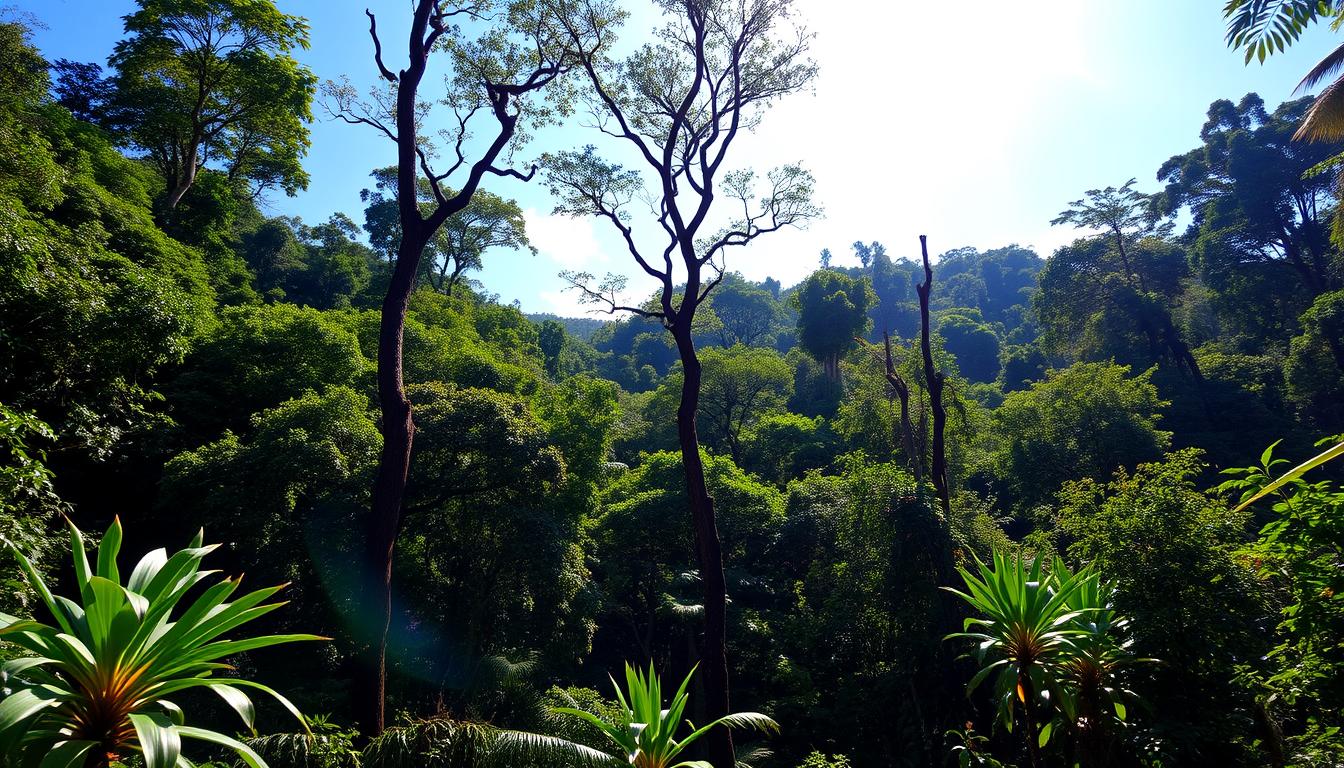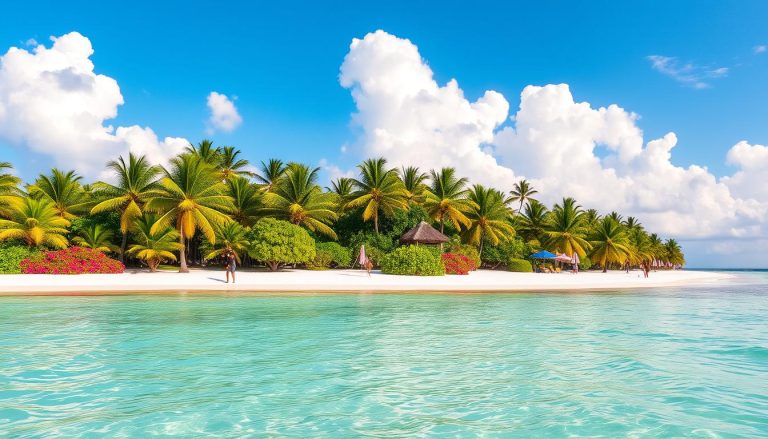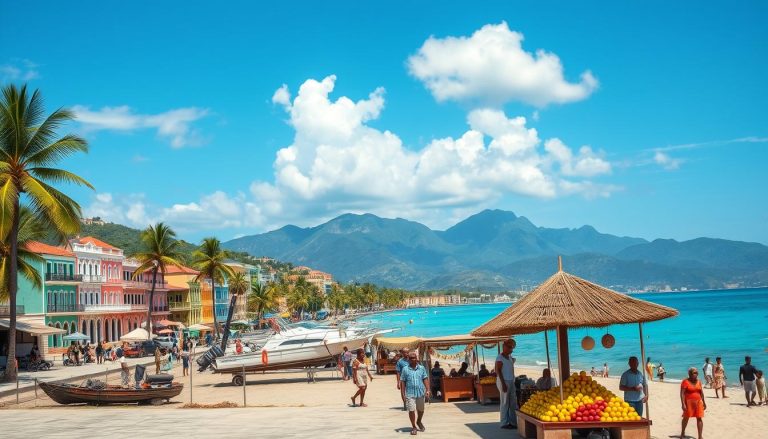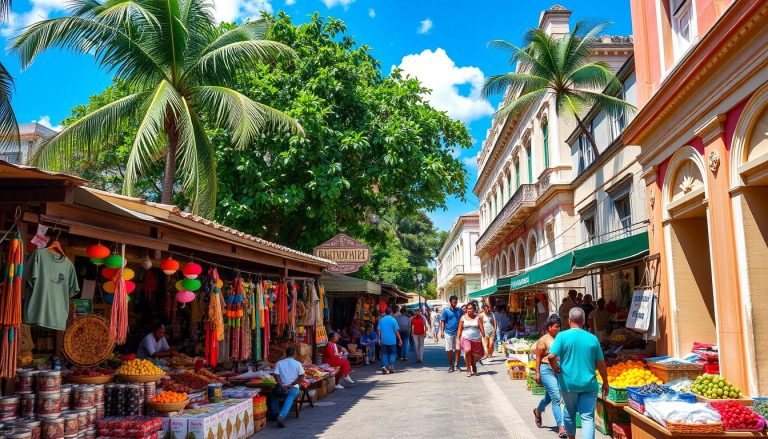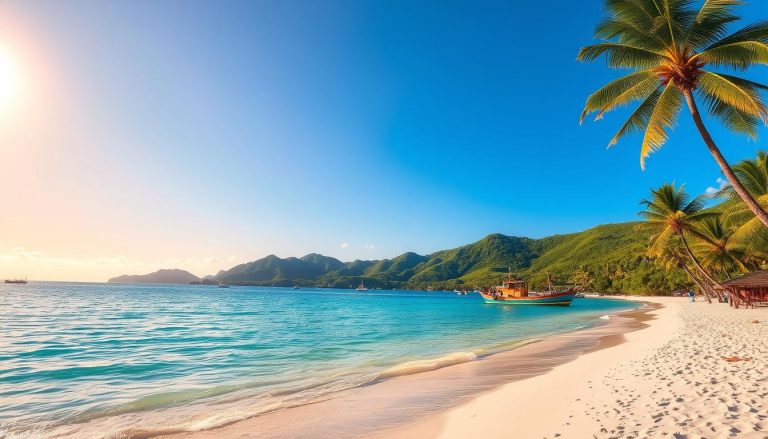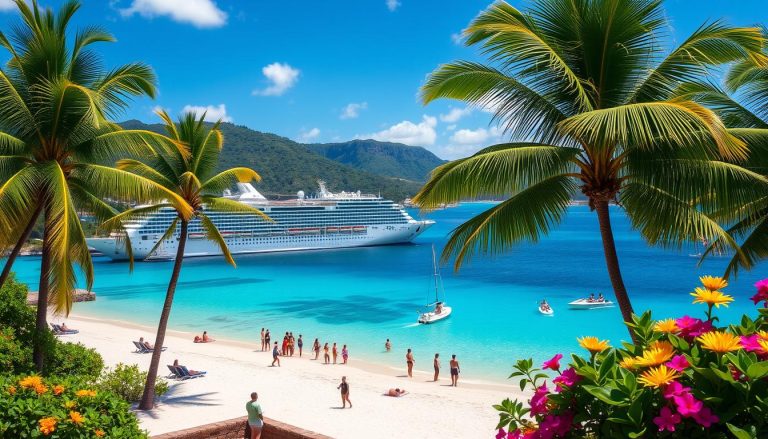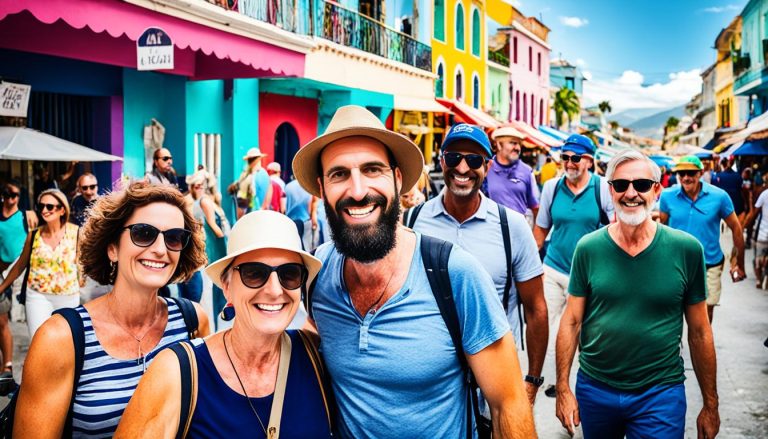Are you ready to explore one of Haiti’s most captivating natural wonders? Macaya National Park is a true hidden gem. It boasts a treasure trove of biodiversity and adventure. From hiking the majestic Macaya Peak to spotting the elusive Hispaniolan Trogon, this remarkable park promises to ignite your sense of wonder.
Key Takeaways
- Macaya National Park is a sanctuary of untouched rainforest in Haiti, home to unique wildlife and plants.
- The park features the Macaya Peak, standing at 2,347 meters, offering hiking trails through cloud forests.
- It’s a haven for birdwatchers, with species like the Narrow-Billed Tody and Hispaniolan Trogon.
- Macaya National Park is part of a transnational biosphere reserve, linking with other protected areas across the Haitian-Dominican border.
- This park offers a unique travel adventure with lush forests, beautiful mountains, and stunning natural scenery.
Introduction to Macaya National Park
In the heart of Haiti’s rainforest, Macaya National Park shines. It’s part of the La Selle Jaragua-Bahoruco-Enriquillo Biosphere Reserve. This area is one of only 21 transnational biosphere reserves worldwide. The park’s highlight is the Macaya Peak, reaching 2,347 meters high.
Location and Geography
Macaya National Park is in Haiti’s southwest, near the Dominican Republic. Its landscape is rugged mountains, lush cloud forests, and deep ravines. This makes the park’s geography truly unique.
Historical Significance
The park has a rich history. It was once home to the Taíno people, leaving behind their culture’s traces. The park’s location was key in Haiti’s fight for freedom, with its terrain aiding the revolution.
Park's Ecosystem Overview
Macaya National Park’s ecosystem is a treasure. It’s full of biodiversity and diverse flora and fauna. The cloud forest is home to unique species like the Hispaniolan Solenodon and Hutia. The park also has rare plants, making it an ecological gem.
“Macaya National Park is a true testament to Haiti’s natural wonders, offering visitors a glimpse into the country’s remarkable geography and rich biodiversity.”
Getting to Macaya National Park
Exploring Macaya National Park in Haiti begins with the trip there. Travel to Haiti usually means flying into Port-au-Prince. Then, you can pick from several transportation options to get to the park.
Getting to access the park might involve driving and hiking. It depends on where you want to go. Local guides are a good idea to help you and keep you safe.
- Fly into Port-au-Prince International Airport, Haiti’s main air hub.
- Arrange ground transportation, such as private transfers or shared taxis, to travel from the airport to the park region.
- Be prepared for a mix of driving and hiking, as the terrain can be challenging in certain parts of the park.
- Consider hiring a local guide to help navigate the trails and provide insights into the park’s history and ecology.
With good planning and the right transportation options, you’re set for an amazing adventure. Discover the natural wonders and rich culture of Macaya National Park.
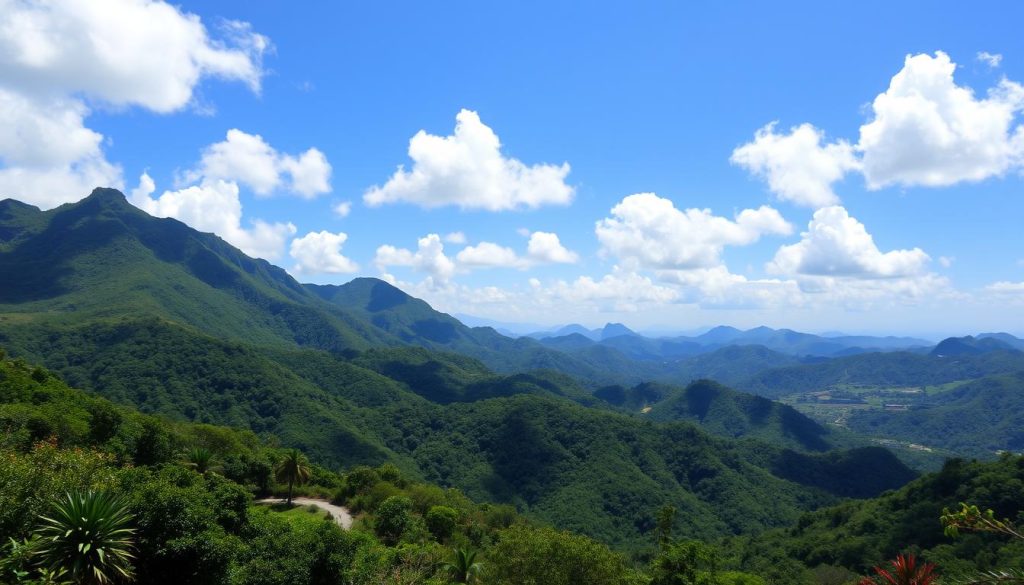
“The journey to Macaya National Park is as much a part of the adventure as the destination itself. Embrace the sense of exploration and discovery along the way.”
Best Time to Visit and Weather Conditions
Haiti has a tropical climate, with temperatures around 80°F (27°C) all year. The best time to visit Macaya National Park is from December to March. This is the dry season, perfect for hiking and outdoor fun.
Peak Season Highlights
The dry season is also the peak tourist time. Hikers enjoy the best trail conditions. Plus, the park’s wildlife and views are clearer with less rain.
Weather Patterns
The rainy season in Haiti is from April to June and October to November. While the park is open, hiking can be tough and wildlife hard to see. Be ready for heavy rain and storms during this time.
What to Pack
- Lightweight, breathable clothing
- Sturdy, comfortable hiking boots
- Rain jacket or poncho
- Insect repellent
- Sun protection (hat, sunglasses, sunscreen)
- Reusable water bottle
- Snacks and energy bars
Packing the right gear and visiting in the dry season makes your trip better. You’ll enjoy Macaya National Park’s wonders more.
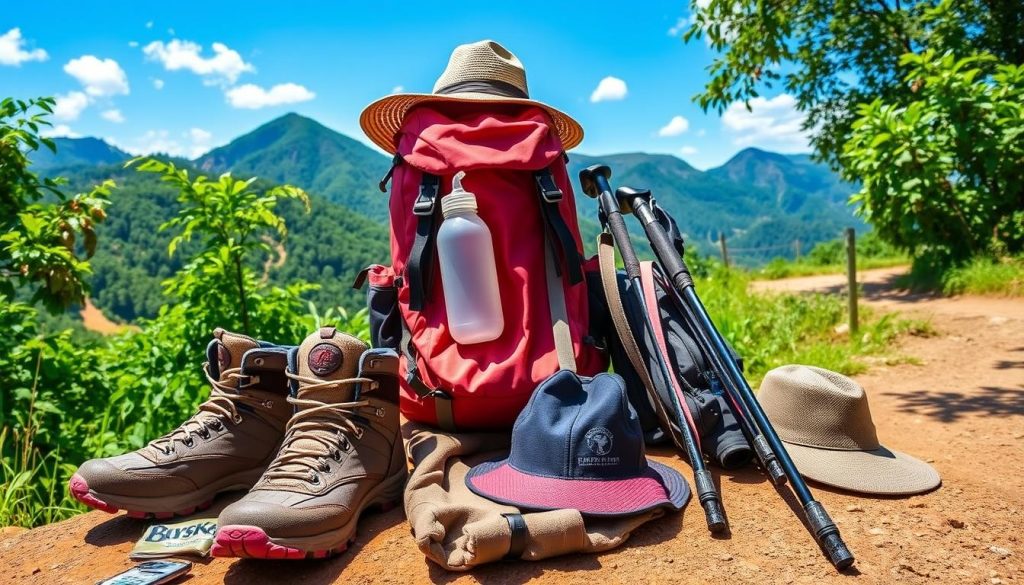
“The best time to visit Macaya National Park is during the dry season, when the weather is ideal for hiking and wildlife viewing.”
Wildlife and Biodiversity Highlights
Macaya National Park is a paradise for nature lovers. It’s filled with unique species and diverse wildlife. The park is especially famous for the rare Hispaniolan Solenodon, a mammal that fascinates scientists and visitors.
The park is also a home for various Hutia species, small rodents that are crucial to the ecosystem. Birdwatchers will love spotting the Narrow-Billed Tody, known as the “Chikorèt,” and the Hispaniolan Trogon, Haiti’s national bird.
The park’s ecosystem is rich in flora and fauna, many of which are found only here. From the colorful plants to the complex life forms, Macaya National Park shows why we must protect our planet’s natural wonders.
“Macaya National Park is a true sanctuary for endemic species, where nature’s wonders can be witnessed in their purest form.”
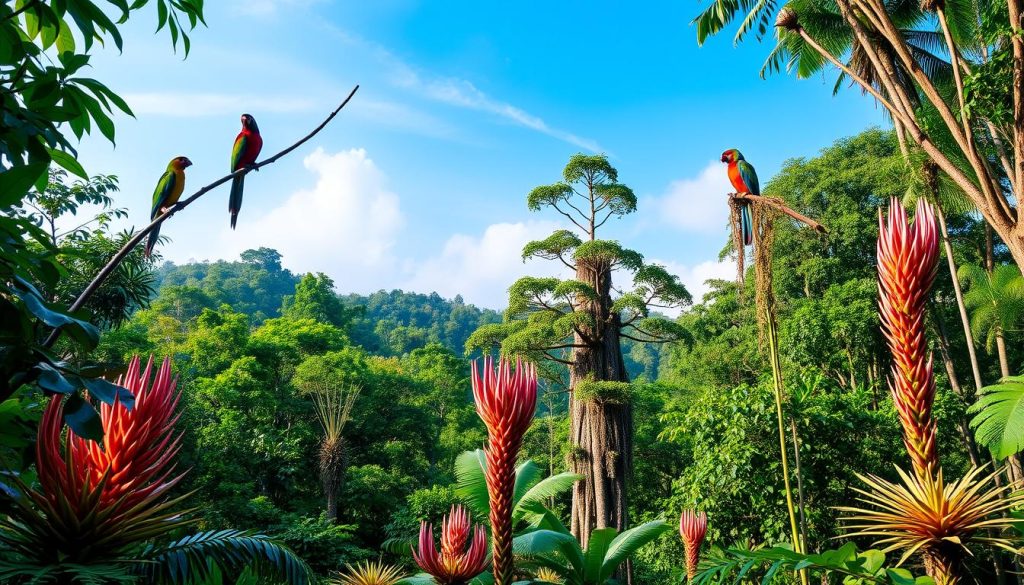
If you love birds, nature, or just appreciate the beauty of the world, Macaya National Park is for you. It offers a unique and unforgettable experience. Get ready to be amazed by the park’s incredible biodiversity and the chance to see some of the world’s most unique species.
Hiking Trails and Adventure Activities
Macaya National Park in Haiti offers many hiking trails and adventure activities. It’s perfect for everyone, from experienced trekkers to nature lovers. This stunning park will surely capture your senses.
Popular Trail Routes
The trek to Macaya Peak is a highlight. It offers amazing views and winds through cloud forests. Here, you can see local wildlife and enjoy the peaceful nature.
Other trails take you through lush vegetation. They let you explore the park’s diverse ecosystem. You can see vibrant flora and fauna up close. These trails suit both casual walkers and serious adventurers.
Difficulty Levels
- Beginner-friendly trails: Gentle inclines and well-marked paths suitable for visitors of all ages and fitness levels.
- Intermediate trails: Moderately challenging routes with some steep sections and uneven terrain, requiring a moderate level of physical fitness.
- Advanced trails: Strenuous hikes with steep ascents, technical sections, and demanding terrain, recommended for experienced hikers.
Safety Guidelines
It’s important to follow safety guidelines for hiking and adventure activities. This includes hiring local guides and staying on marked trails. Also, be ready for changing weather.
Wearing the right gear is key. This includes sturdy hiking boots, weather-appropriate clothing, and enough water. By following these tips, you can enjoy Macaya National Park safely and make lasting memories.
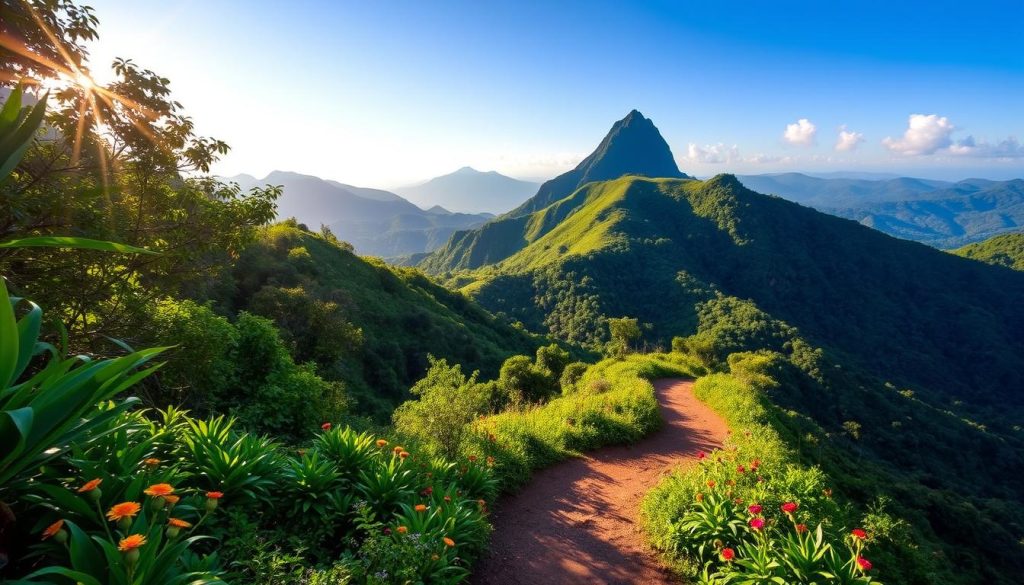
Macaya National Park, Haiti: Best Things to Do - Top Picks
Macaya National Park in Haiti is a nature lover’s dream. It’s full of activities for those who love adventure and the outdoors. You can hike, take amazing photos, and enjoy eco-tourism.
Hiking to Macaya Peak
The hike to Macaya Peak is a must-see. It’s 2,347 meters high and offers stunning views. The trail goes through cloud forests and you might see rare birds and plants.
It’s a tough hike, but reaching the top is worth it. You’ll feel proud and see the beauty of Haiti.
Birdwatching in the Cloud Forests
Macaya National Park is great for birdwatchers. It has many birds, like the Hispaniolan Trogon and the Solitaire. Don’t forget your binoculars to see these amazing birds up close.
Capturing the Stunning Landscapes
For nature photographers, Macaya is a dream. Its landscapes and wildlife are perfect for photos. From the misty peaks to the calm streams, every spot is a photo opportunity.
Eco-tourism and Conservation Initiatives
The park also supports eco-tourism and conservation. You can join guided tours and learn about the park’s wildlife. This helps protect the park for future visitors.
“Macaya National Park is a true haven for nature lovers, offering a diverse array of activities that showcase the beauty and richness of Haiti’s natural heritage.”
Endemic Species and Plant Life
Macaya National Park in Haiti is a true haven for biodiversity. It boasts an array of endemic plant species that are both rare and endangered. The park’s varied ecosystems, from lush subtropical forests to high-altitude alpine areas, support a diverse range of flora. Many of these plants are found nowhere else on Earth.
Rare Flora Species
The park’s most prized botanical wonders include the Haitian endemic species. The striking Hispaniolan pine and the delicate Hispaniolan fir are among them. These rare plants, found only in the highlands of Haiti and the Dominican Republic, face threats from deforestation and habitat loss.
Other notable endemic species include the Macaya bellflower, the Hispaniolan giant fern, and the Haitian woodlily. These plants are meticulously monitored and protected within the park’s boundaries.
Conservation Efforts
The Haitian government and local conservation organizations have made protecting the park’s unique plant life a priority. Ongoing projects focus on habitat restoration, species monitoring, and public education. These efforts aim to raise awareness about the importance of Haiti’s biodiversity.
These conservation efforts have been crucial. They have helped prevent the further decline of rare plant species. This ensures that Macaya National Park remains a haven for the island’s endemic flora for generations to come.
Photography Opportunities
The park’s stunning landscapes and rare plant life offer exceptional opportunities for nature photography. Visitors can capture the vibrant colors and intricate details of the endemic species. This creates lasting memories and raises awareness about the importance of conserving Haiti’s biodiversity.
Exploring the hidden gems of Macaya National Park’s endemic plant life is a rewarding experience. It is perfect for nature enthusiasts and photographers alike. By supporting conservation efforts and appreciating the park’s rare flora, visitors can play a vital role in preserving Haiti’s remarkable biodiversity for future generations.
Cultural Experiences Around the Park
Visiting the local communities around Macaya National Park lets you dive into Haitian culture. It’s more than the park’s beauty. These cultural experiences make your trip even better.
Eco-lodges near the park offer cultural programs. You can enjoy traditional music, art, and cooking classes. These activities show you the area’s rich heritage.
Working with local guides is a great way to explore the park. They know a lot about the area’s history and nature. Their help also supports the local economy.
Try a drum-making workshop, watch a dance show, or explore a local market. These moments around Macaya National Park will impress you. They’ll make you appreciate Haitian creativity and resilience.
“Engaging with local communities is the best way to truly understand a destination. The cultural experiences around Macaya National Park are not to be missed.”
| Cultural Activity | Location | Duration |
|---|---|---|
| Traditional Haitian Cooking Class | Duchity Village | 2-3 hours |
| Vodou Drum and Dance Performance | Jeremie Town Square | 1 hour |
| Artisan Market Tour | Jérémie Market | 1-2 hours |
Accommodation Options and Facilities
Visiting Macaya National Park in Haiti offers a variety of places to stay. You can choose from camping inside the park or eco-lodges nearby. Each option lets you dive into the park’s natural wonders.
The park’s facilities are simple, keeping the environment untouched. Eco-lodges nearby offer tours and educational programs. These help you learn about the park’s ecosystem and wildlife. But, staying in the park means you’ll face more basic conditions. Make sure to bring everything you need for a comfortable stay.
Whether you camp or stay in an eco-lodge, your stay at Macaya National Park is unforgettable. You’ll see amazing landscapes, diverse plants and animals, and learn about the local culture. With many choices, you can plan your trip to fit your needs and budget. This ensures a memorable visit to Haiti’s natural gem.
